8 Ways to Get a Handle on the Junk Drawer
http://decor-ideas.org 09/14/2014 19:15 Decor Ideas
Junk drawers get a bad rap, and while it is (mostly) well deserved, there is a way to get that beast sorted and organized once and for all. From creating categories to making smart choices about what goes in and what stays out, these eight tips can help transform junk drawers into “really useful stuff” drawers, ones that keep small items right where you need them.
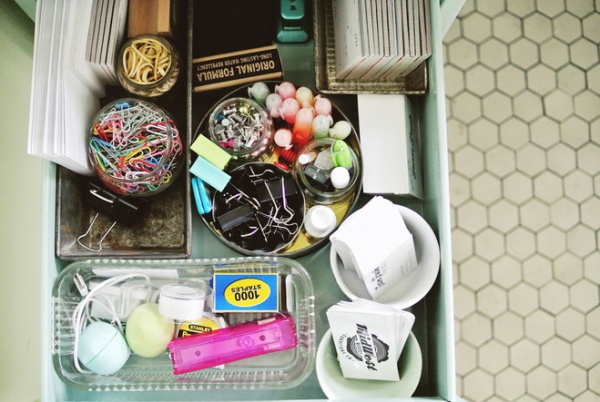
1. Have more than one small-stuff drawer. A single drawer for small items is simply not enough for most households — and overstuffing is what turns a “really useful stuff” drawer into a junk drawer. It starts innocently enough — you want to quickly clear off a counter because guests are coming, so you slide a few random screws, a rubber band and some pocket change into the drawer. The thing is, it’s a slippery slope. Once that drawer starts to look disorganized, it’s easy to just forget the whole thing and start shoving in every loose item that crosses your path.
2. Come up with categories. To stop that from happening, begin by choosing a few categories of small-stuff drawers. Then you can stop thinking of them as junk drawers entirely, and start thinking of them based on the theme of their contents. For instance:
Household tools drawer
Office supplies drawer
Electronics drawerCrafts or gift-wrapping drawer
Drawer for personal items you need to get out the door
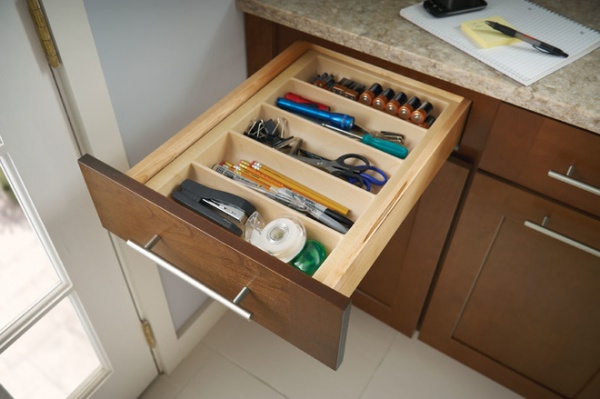
3. Know the two ways to sort. There are certainly other ways to sort your belongings, but these two ways are simple and effective.
Like with like. A family member of mine sorts her kitchen tools into two drawers: “scoopy-stirry” (spoons, ladles etc.) and “cutty-pokey” (knives, vegetable peelers etc.). Sounds a little silly, but it works, and once you know where these drawers are, you can quite easily find what you need, even if you are not familiar with her kitchen. Other like-with-like categories might include tools, paper goods, and electronics and power cords.
Complete a task. The second way of sorting is to corral everything you need to complete a task from start to finish. In one drawer in my home, for instance, I have envelopes, stamps, pens, checks and an address book. You might want a drawer near the front door to keep your keys, wallet, cell phone, sunglasses and other personal items.
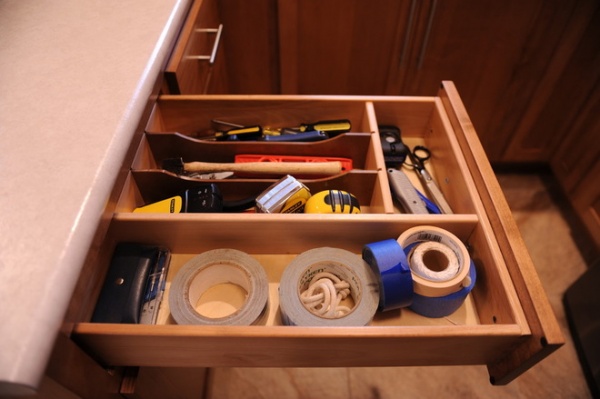
Here is a good example of a well-tended tool drawer. It contains useful, everyday tools — tape, twine, scissors and screwdrivers. This is not the place for arcane tools and specialized equipment used only once or twice each year. Which brings us to the next point.
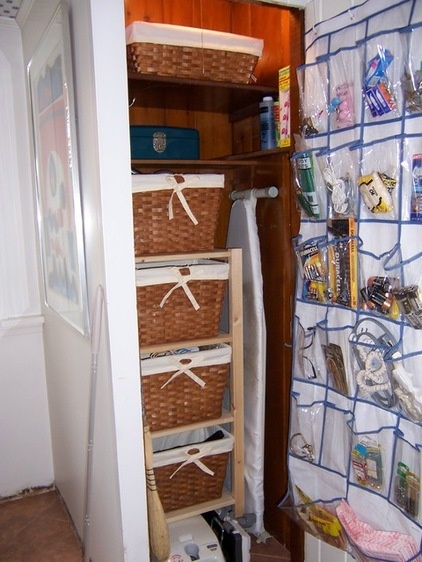
4. Know what doesn’t belong. In addition to your small-stuff drawers, it’s helpful to have another location for small items that you rarely use. While your measuring tape and box cutters may deserve a spot in a small-stuff drawer, those random screws do not.
An over-the-door shoe organizer hung inside a utility closet makes an ideal spot for stowing random items that do not belong in a small-stuff drawer.
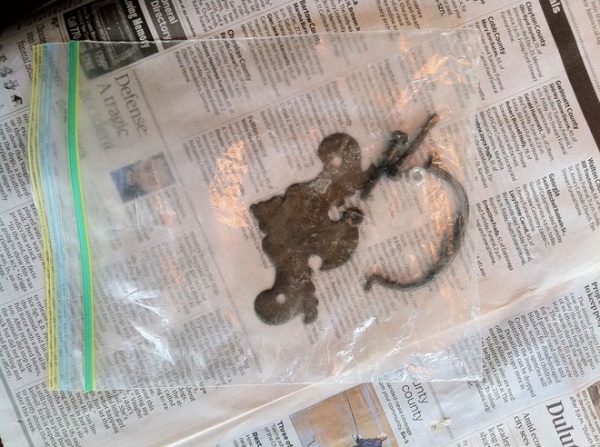
5. Always label loose parts. If there were only one tip I could ensure that you take away from this, it would be this: Never put a loose part away without labeling it. An easy way to do this is to pop the item in a zip-top bag, place a piece of masking tape on it and write what it is on the tape using a Sharpie. This way when you go to get rid of your old speakers, you can quickly find all of the cords that go with them and get rid of those, too. I started doing this recently, and it has changed my (organizing) life.
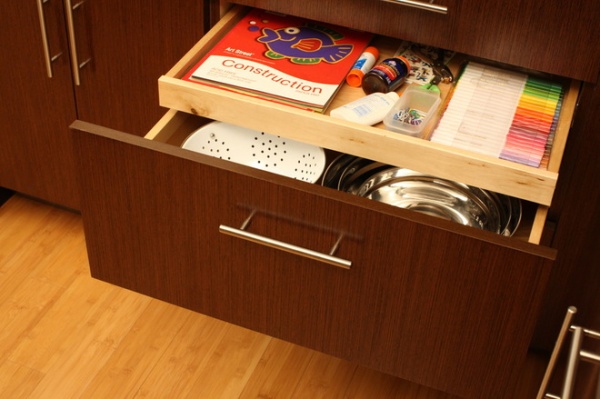
6. Keep it where you use it. Are your kids always doing art projects in the kitchen? Keep a drawer for arts and crafts supplies there, instead of down the hall. When items are stored in the room where they are used, they are far more likely to be returned to the right place.
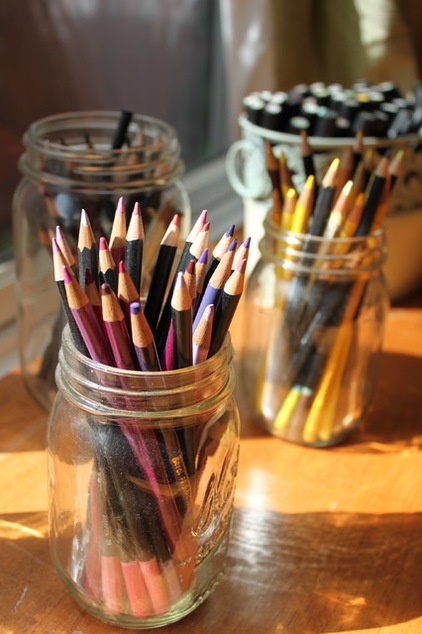
7. Find the right container for the job. Not everything needs to lie flat in a drawer. If your drawers are deep enough, consider standing some items upright in simple glass jars.
Experiment with upcycled containers — egg cartons are good for sorting tiny items, and jam jars work wonderfully for paper clips.
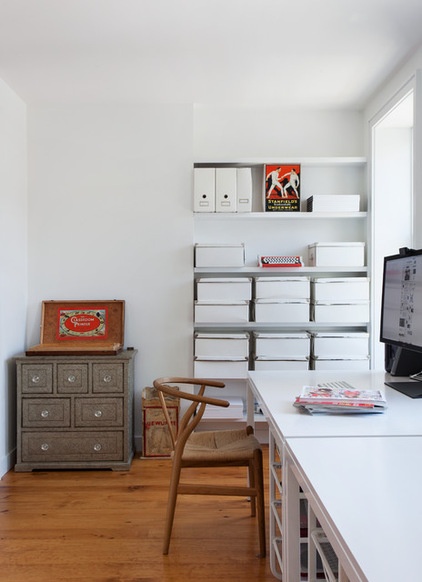
8. Think outside the drawer. Not everything needs to be in a drawer. Papers are better off in flat boxes (labeled, of course) or files. Baskets with drawer inserts placed inside have the advantage of being portable, so you can bring them right where you need them.
Do you have a junk drawer or a small-stuff drawer? Neat or not, please share a photo in the Comments!
Get It Done: Whip That Junk Drawer Into Shape
Related Articles Recommended












